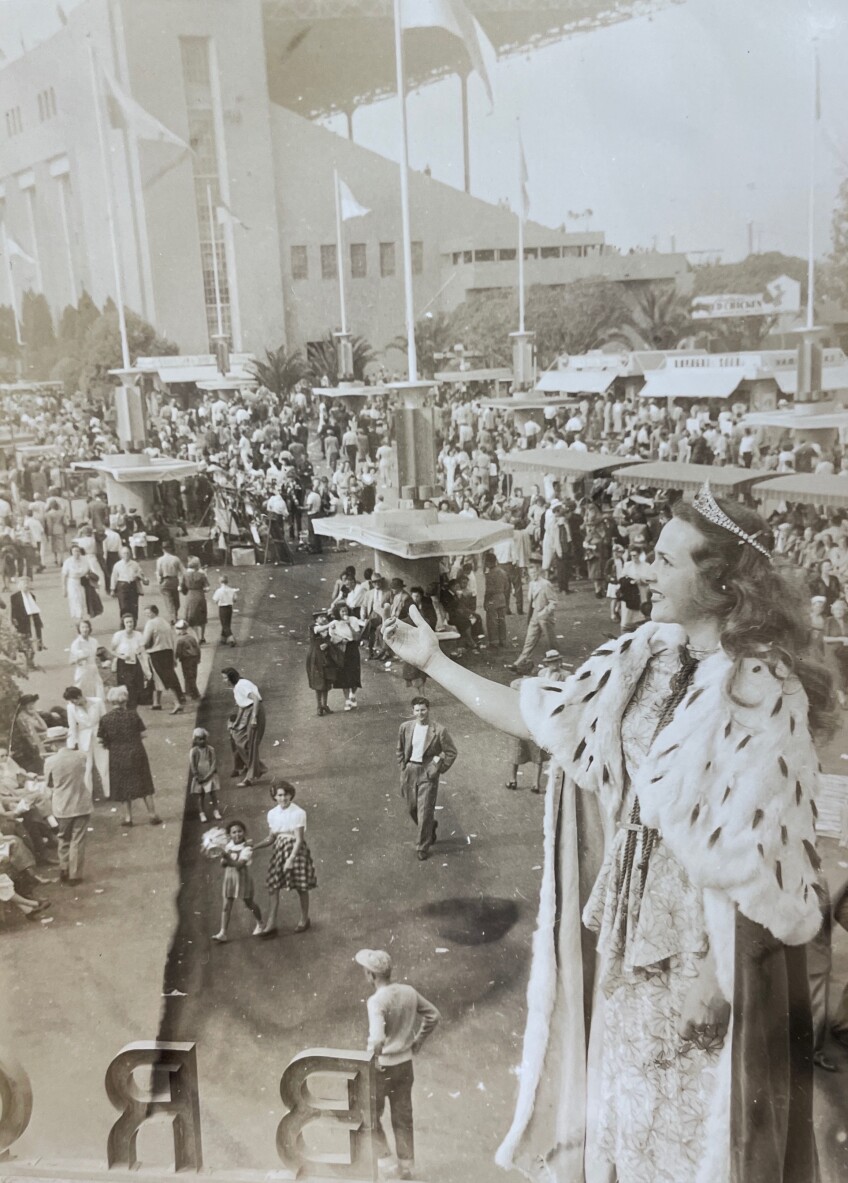Rare Photos from the Los Angeles County Fair's 100 Years

The Los Angeles County Fair turns 100 this year. It first opened in Pomona on October 17, 1922, when nearly 50,000 people walked through the entry gates of the inaugural fair. Earlier that year, a group of Pomona businessmen and civic leaders transformed a 40-acre beet and barley field into a fairground with a grandstand, a barn, race track and exhibit tents to promote "the agricultural, horticultural and animal husbandry interest of the great Southwest," according to the group's original charter.
Two decades later, the fair opened with the theme "A Century of Progress" to kick off another centennial in 1948 — a three-year celebration for the 100th anniversary of California. For the first time, the fair had over one million visitors, making it one of the largest fairs in the country. After a six-year-hiatus due to the war, that fair welcomed visitors with newly painted buildings splashed with blues, greens, purples and golds with a million zinnias planted to match. That was the year that the brightly-colored Hot Dog on a Stick made its debut at the fair along with the brand new Palace of Agriculture. Over 30 California counties and communities competed for the best produce exhibits in that new building in which the Los Angeles County exhibit stood center with its oversized painting of a San Gabriel Mission fiesta flanked by rows of oranges.

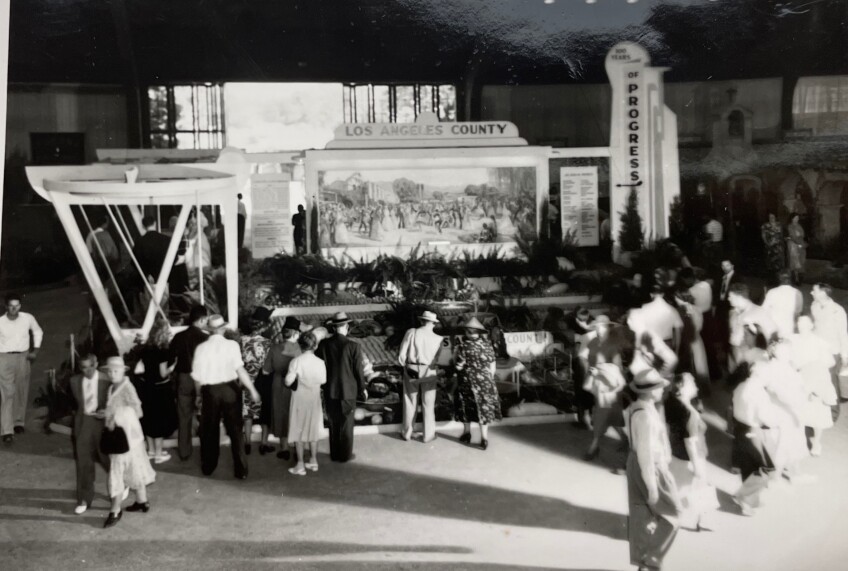
As Judith Gerber, co-author of "Cows to Concrete: The Rise and Fall of Farming in Los Angeles" explained in a phone interview, "the importance of the Los Angeles County Fair was its ability to showcase the agricultural possibilities to Angelenos, many of whom were often newcomers to California. The fair also didn't just support the work of agricultural producers, but it also informed its consumers as to the type of products and brands available." A blue ribbon at the fair was prestigious enough that companies bought newspaper ads that promote their fair award to the consumer. What started as a way to promote the region's agriculture and industry has also grown to encompass many of the creative and whimsical aspects of Southern California life as well. Considering all the ways the fair has entertained, informed and marketed to Angelenos over the past 100 years, here is a glimpse of a few attractions that have lit up local imaginations over the last century.
Horsing Around
"California, Southern California especially, was horse country," Kevin Starr explained in his book "Embattled Dreams: California in War and Peace, 1940-1950." The inaugural Pomona fair illustrated this fact when it offered nightly horse shows along with daily horse racing along its half-mile track. When California legalized pari-mutuel gambling in 1933, the Los Angeles County Fair was the first track in Southern California to offer betting (Santa Anita Race Track opened a year later). In 2014, horse racing moved off the fairgrounds and over to Los Alamitos. Horse racing, harness racing, horse shows and rodeos would continue to fill the grandstand throughout the fair's history. In 1957, television cowboy Gene Autry and his TV co-star Gail Davis (who played Annie Oakley) hosted the fair's championship rodeo. Autry even took a moment to award two youngsters who won the Huckleberry Finn and Becky Thatcher contest.

Farm Animal Showdowns
Agriculture has always been center stage at the Los Angeles County Fair. Farmers and junior farmers throughout California brought their cows, horses, sheep, rabbits, chickens, pigeons and hogs to compete in Pomona. In that first 1922 fair, more than 250 goats bleated their way through the goat show while the 1,000 pigeons cooed in a nearby exhibit. On the last day of the fair, the annual million-dollar stock parade elicited cheers from the crowds supporting farmers from all over California who marched alongside their prize-winning hogs and dairy cows.


In 1949, actor Fred MacMurray won seven blue ribbons and also a grand championship for his shorthorn bull named Commander Chief. Blue ribbons were not only awarded for the best farm animals but also for skills related to husbandry, such as best hog caller, fastest cow-milker and best rooster crower. In 1948, rooster-crowing contestants were judged on "40% on range, voice quality, tone, pitch and delivery and 60% on sex appeal, masculinity, urgency and volume," according to one LA Times article.
In the early years, the Palace of Agriculture was filled with larger-than-life dioramas made of citrus, nuts, grains, vegetables and wine as California counties competed for blue ribbons for the best displays and to promote their communities to potential new businesses and residents.

Over the years, some of the agricultural space gave way to the Story Book farm which opened in 1962, where nursery tales like "Peter Rabbit" came to life. The site, now the California Heritage Square, featured a 1800s replica of the rural farm home, windmill with live animals and a farmer and his wife. Just as middle-class Angelenos were planning gardens for their new homes in new housing tracts, the fair opened the Flower & Garden Pavilion in 1952 as a venue to highlight the latest in garden designs and floral arrangements.

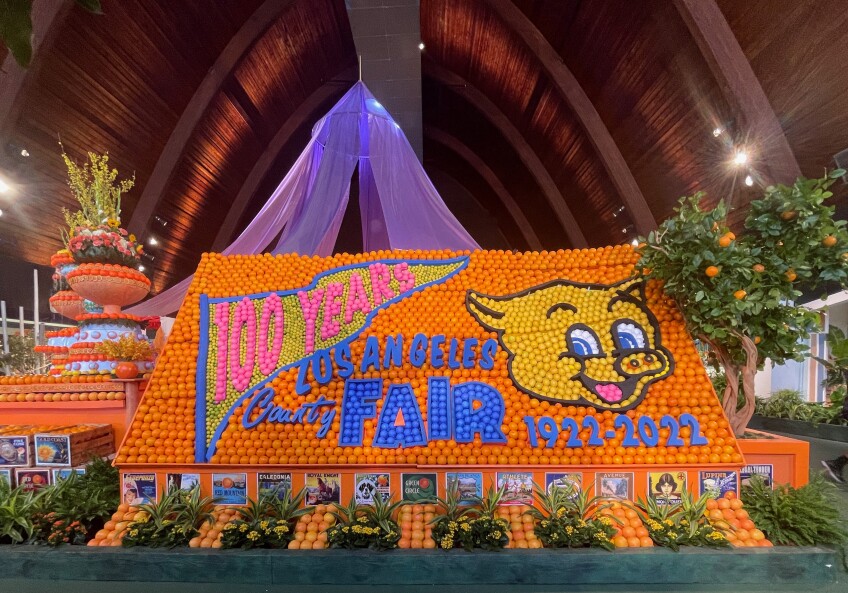
Los Angeles' agricultural power may have waned but the fair still pays homage to the county's agricultural past and present at its historic farm with petting zoos, livestock exhibits and animal contests. Mixed throughout the animal stalls, there are often displays about churning butter, hydroponic gardening and bee-keeping. As the county has more gardeners than gentlemen-farmers these days, the Farm now shows what produce can grow in smaller plots and sustainable growing practices.
Culinary Competitions
Compared to today's coverage of county fairs, food was not a major headline unless it related to food in the form of livestock. At that first fair in 1922, clubwomen served mince meat pies, pickled walnuts, potato chips and a homemade drink called the Ebell Zip. Over the years, the food contests have included pie-eating, donut-eating, milk-drinking, ice-cream stuffing to best recipe competitions that promote well-known brands, like the Spam luncheon meat recipe contest, the Kraft Mayonnaise salad bowl, and the Chicago Brothers Pizza-making contests.

The Los Angeles County Fair hosts one of the oldest county fair wine tastings in the country. Shortly after the end of prohibition, the Los Angeles International Wine Competition started in 1935, focusing on California wines. By the 1960s, the fair established a public wine tasting and added a wine education center in 1998.
Domestic Improvements
As suburban subdivisions paved over citrus orchards, the Building Contractors Association (now the Building Industry Association of Southern California) set up an actual model home at the fair to show new homeowners the latest in construction materials and home design. In 1950, the two-bedroom model home was dubbed the "Television House" as it included a room designed for home entertainment needs with special sound-proof walls. This model home exhibit lasted through the 1960s and each house was sold and moved to the buyer's site.
A look inside past exhibit halls illustrates a history of how modern appliances were marketed to consumers. Utility companies like Southern California Edison and the Gas Company had exhibits that presented the homes of the future and the fuels that should power them. These displays didn't just target new homeowners, but also created booths for farmers and municipalities that explained the types of energy that could be used for powering equipment like agricultural pumps and oil rigs.
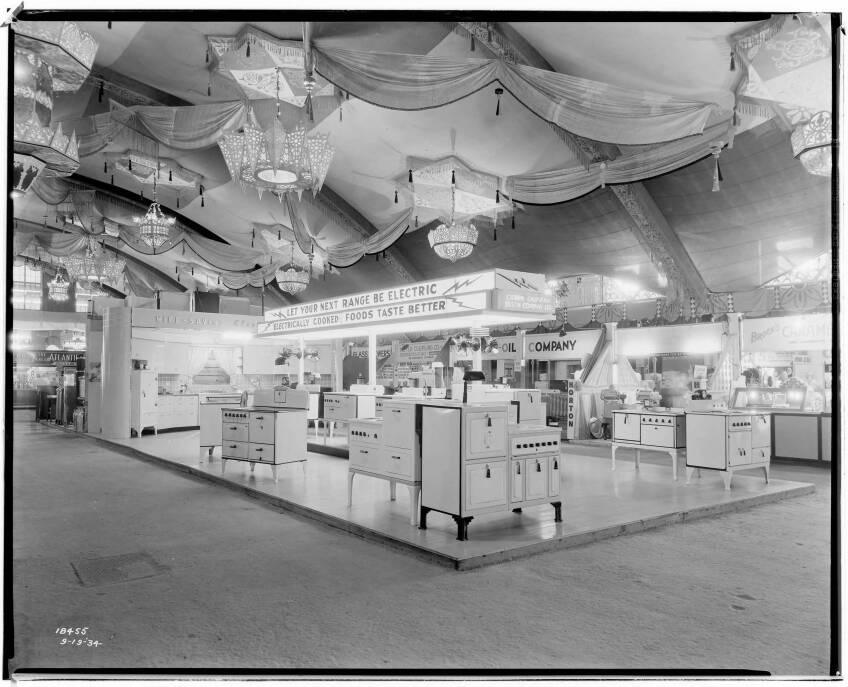

Artful Living
These 1950s model homes complemented the mid-century exhibits at the fair's Fine Arts Center curated by prominent artist and center director Millard Sheets. In 1954, Sheets partnered with the magazine House Beautiful for the "Arts of Daily Living" exhibit to create 22 rooms designed by architects using furniture, rugs, pottery, mosaics crafted by highly-regarded artists to show how to incorporate contemporary art in daily life. The exhibit, dedicated to Frank Lloyd Wright, received national attention and even earned a visit from Wright himself.
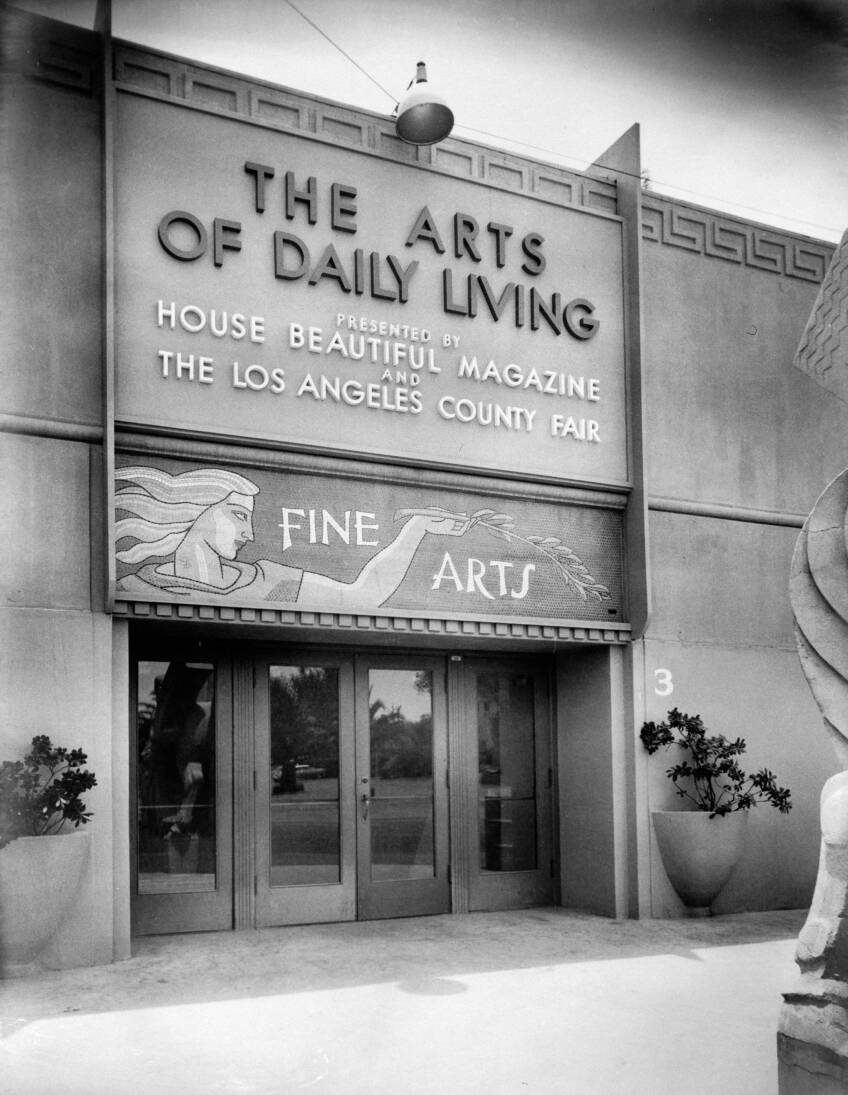
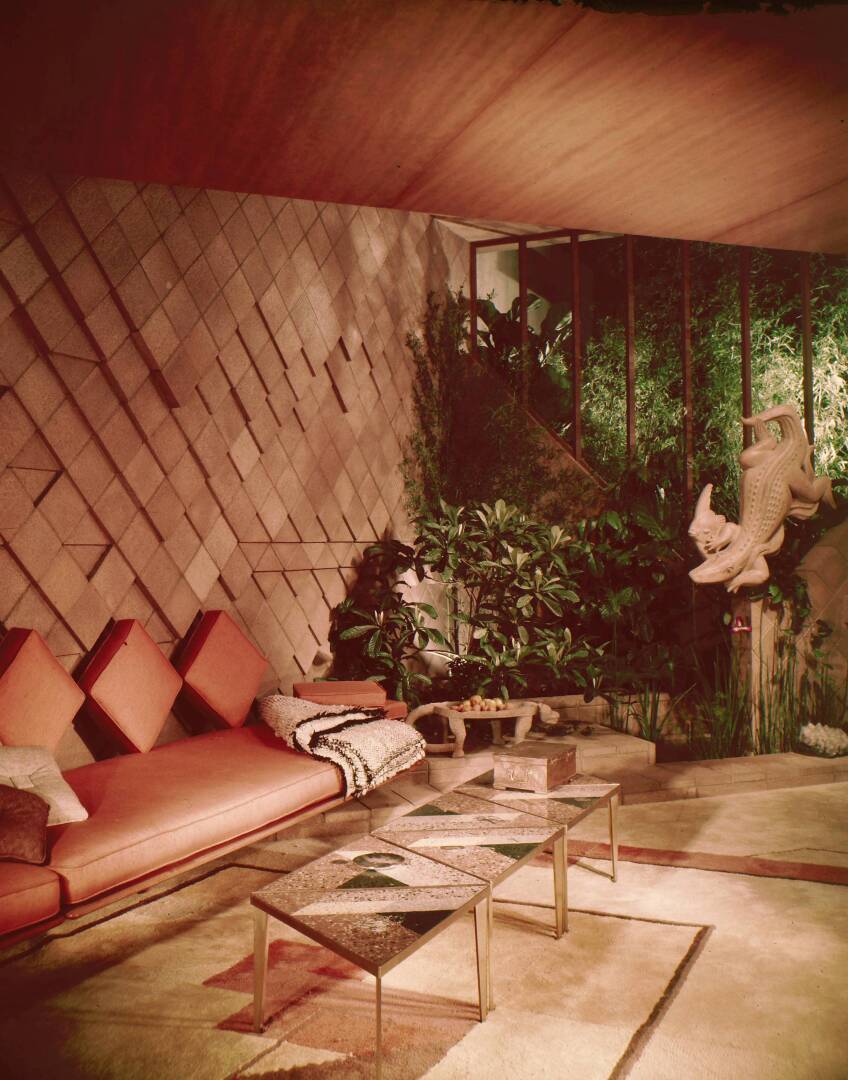
Pomona-born Sheets had a long history with the fair as his uncle was one of the co-founders and Sheets even won a painting competition in the fair's early years. As Sheets recounted in his oral history, he built upon the work of the fair's first art director Theodore Modra who believed strongly in "bringing art to the people." Sheets brought nationally-recognized artists and borrowed art from museums like the Louvre, British Museum and New York's Metropolitan. As the LA Times art critic Arthur Miller wrote in 1937, "This is 'high art' stuff for a county fair." The Fine Arts Center was dedicated to Millard Sheets in 1994.

Railroad Revelations
One of the oldest fair attractions, the Fairplex Garden Railroad transports visitors through different eras of California and Western history. Situated on a plot approximately 100 by 300 feet, model trains whizz by miniature versions of the Plaza Church, Mt. Lowe funicular, Randy's Donuts and the Golden Gate Bridge. Initially built by high school students led by teacher Herman Howard, the model railroad started in 1924 as a diorama to show potential development of nearby Puddingstone Reservoir and was moved to its current location in 1935.

Monorails and More
New forms of transportation have always been presented at the fair ever since it opened with airplane wing-walking and 160 touring cars, roadsters, coupes and sedans in 1922. Charles Lindbergh flew over the fair in his Spirit of St. Louis in 1927. The Navy and Douglas Aircraft displayed a prototype of the supersonic Navy Skyrocket in 1951. Car, trailer, boat and RV exhibits have been a staple of the fair over the years.

In 1962, the Los Angeles Times reported that "Telstar, monorail and misses have taken their place alongside the prize cattle, exotic flowers, race horses." This was the Atomic Age and the fair's brand new monorail helped to compete with the likes of Disneyland and Knott's Berry Farm. Fourteen cars each transported 26 passengers, giving riders a mile-long scenic look over the fairground. Unfortunately there was no air conditioning in those early cars, a problem that was eventually fixed. By 1990, new 40-seat cars were added but were too heavy and the rail started to crack so the system was removed in 1996.
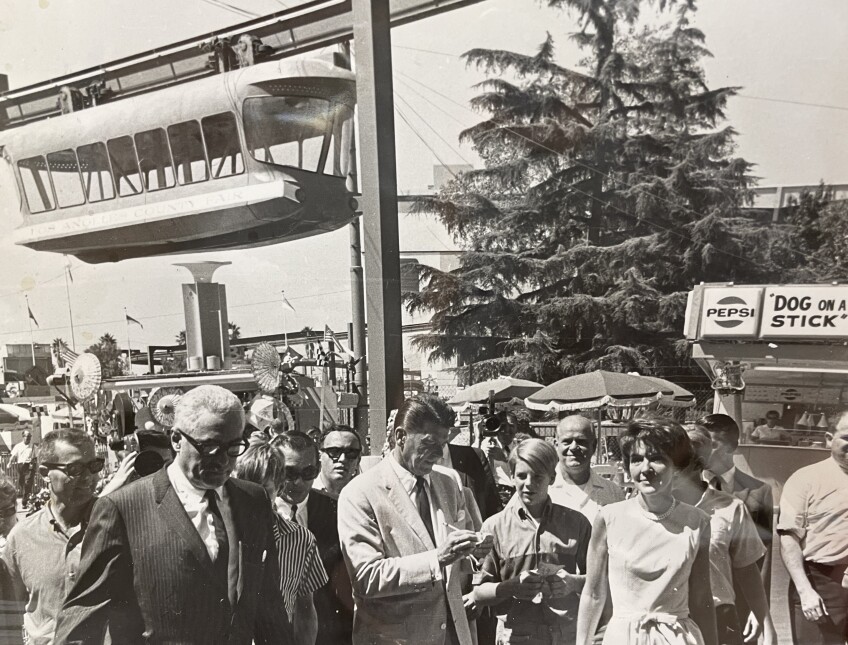
Ski Jumping to the Olympics
The fair kept pace with middle-class Angelenos increasing leisure time by adding attractions that appealed to the outdoorsy type. Attractions and competitions showcased fishing, camping, boating, hiking and golf.

In 1951, the fair built a 225-foot ski jump, which may have felt like a mirage to the average fair-goer watching in Pomona's 90-degree heat. Members of the US championship ski team demonstrated ski jumps, the slalom race and other ski maneuvers as six ice machines kept the man-made jump smooth. During the performances, other ski jumpers successfully raised funds for their Olympictravel fund by circulating through the crowd an asking for donations to travel to the Winter Olympics in Oslo in 1952. KTTV even broadcast the ski jumps, along with the fair parade. It's worth mentioning that wrestling and a talking cow robot was also introduced that same year.

In the fall of 2021, Fairplex gave its extensive archive to CalPoly Pomona's University Library Special Collections, which included 200 linear feet of boxes filled with programs, racing reports, photos, scrapbooks and films, some of which are below. Once this archive is processed, researchers will be able to dig into the rich history of the fair that not only reflects the region's agricultural history but provides insight into the county's industrial, recreational, culinary, technological and public health history as well.
Scroll down to take a look at some rare and historic photos of L.A. County Fair through the years, archived in CalPoly Pomona's University Library Special Collections.
